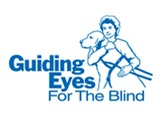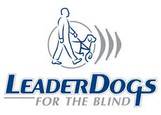- Home
-
Learn
- History of VI >
- Legislation & Laws >
- Vision Professionals >
-
VI Program Resources
>
- Program Printables
- Itinerant Teaching Tips
- Year at a Glance
- VI Program Handbook
- Caseload Analysis
- Organization & Time Management
- Professional Development
- Teacher Standards
- Professional Ethics
- Awards & Recognition
- APH Scholar Program
- Professional Organizations
- Certification Organizations
- Dealing with Challenges
- Professional Publications >
- Relatable Books for All Ages >
- Family Resources >
- Plan
- Basics
-
Teach
- Teaching Strategies >
-
Compensatory Skills Instruction
>
-
Social Skills
>
-
Self Determination
>
- Body Image & Acceptance
- Making Personal Goals
- My Vision Presentation
- My Self-Description
- Create a Personal Data Sheet
- Disclosure Decision
- Disability Statement
- Requesting Help
- Fighting Fears
- My Circle of Support
- Personal Responsibility
- Advocate for Safe Enviroments
- Having Picture Taken
- Coping with Change
- Aging Eyes
- Physical Characteristics
- Political Activism
- Laws Regarding Persons with Disabilities
-
Sensory Efficiency
>
-
Independent Living
>
- Orientation & Mobility Instruction >
- Recreation & Leisure >
-
Career & Vocation
>
-
Grow
- Complete Set Bonus >
-
Recorded Presentations
>
- Webinar: Tips for Being a "Physically Fit" TVI
- Webinar: The Art of Teaching the ECC
- Webinar: Virtual & F2F Strategies
- Webinar: Foundations of Teaching the ECC in the Age of Virtual Instruction
- Webinar: Itinerant Teaching Strategies
- Webinar: Using Themes to Teach the ECC
- Webinar: Conducting a FVLMA
- Webinar: Selecting the Right AT
- Webinar: Developing SMARTER Goals
- Webinar: Determining Service Intensity Using the VISSIT
- Webinar: Activities to Teach the ECC
- Webinar: Accessible Content for BLVI
- Webinar: Accommodations for VI
- Webinar: MIMO Strategies & Activities
- Webinar: SIDPID Strategies & Activities
- Webinar: Standard Course of Study Strategies & Activities
- Webinar: Job Tasks for Job, Career & Life
- Shop
- Jobs
Dog GuidesBy: Carmen Willings
teachingvisuallyimpaired.com Updated May 11, 2024 Dog guides are assistance dogs trained to lead people who are blind or visually impaired. Dog guides can be helpful for many, but not appropriate for everyone. The person who uses the dog guide must have excellent orientation and mobility skills. They also must like dogs and be willing to provide ongoing care and maintenance of a dog guide. History in the United StatesDog guides were first introduced to the United States when Morris Frank, a Nashville resident, returned from Switzerland with a German shepherd named Buddy who was trained by Dorothy Harrison Eustis, an American dog breeder living in Switzerland. Frank traveled around America telling people about dog guides. He later co-founded The Seeing Eye in Nashville, Tennessee with Dorothy Eustis.
AccessibilityIn some countries, including the United States, dog guides are exempt from regulations against the presence of animals in places such as restaurants and on public transportation. The Americans with Disabilities Act prohibits any business, government agency, or other organization that provides access to the general public from barring dog guides. Further, the Fair Housing Act requires that landlords allow tenants to have dog guides, as well as other types of assistance animals, in residences that normally do not permit pets.
The DogsIt must be understood that dog guides are professional working dogs and must be well trained. All dog guides are trained extensively before they are matched with a candidate. They are instructed in navigating obstacles and also to follow verbal commands. The most popular breeds of dogs used as dog guides are Golden Retrievers, Labradors, and German Shepherds. Recently, other breeds have been trained including Standard Poodles and Collies.
Candidates for a Dog GuideDog guides are carefully matched with the person who is blind to best match the person's personality, lifestyle, and physical needs. The person who is blind must know how to get from one place to another, and the dog's job is to get them there safely. The dog can then help the person locate familiar landmarks and negotiate obstacles. All programs require that candidates complete an application and meet eligibility requirements. Most programs require that the candidate must be in good health, be able to walk at a good, brisk pace, use the dog on a regular basis, and typically be at least sixteen years old. The candidate must be willing to provide continued maintenance, obedience training, and care.
Assistance Dog EtiquetteDiscuss with the student the importance of observing etiquette rules when interacting with assistance dogs. While some assistance dogs are therapy dogs and are intended to be interacted with, many assistance dogs are working and, on the job, and you should never interfere. Discuss the following guide dog etiquette:
Dog Guide Programs
The mission of Guide Dog Foundation for the Blind, Inc. is to improve the quality of life for people who are blind, visually impaired, or with other special needs. Since 1946, the Guide Dog Foundation for the Blind, Inc. has provided guide dogs free of charge to blind people who seek enhanced mobility and independence. Their students come from all over the United States and many foreign countries. Their trademark small classes and individualized instruction often attract students who may have special requirements. They have successfully trained hearing-impaired blind people as well as many physically challenged people. They are supported entirely by donations from generous individuals, corporations and foundations. We receive no government funding.

Guide Dogs for the Blind, Inc. provides skilled dogs and training in their use free of charge through private donations. Their unique program is equal parts match-making, intensive training, and lifetime support. Students have access to instructors, counselors, and veterinarians, a full-time nursing staff, a dedicated dormitory staff all of whom attend to students' needs in order to make their stay pleasant and enjoyable. They also offer follow-up services to each graduate of our program at their home or place of business for the lifetime of their guide dog partnership.

Guiding Eyes for the Blind is an internationally accredited guide dog school providing greater independence, dignity, and new horizons of opportunity.

Leader Dogs for the Blind provides free guide dogs, GPS and orientation and mobility programs to the blind, Deaf-Blind and visually impaired. Guiding Eyes for the Blind is dedicated to enriching the lives of blind and visually impaired men and women by providing them with the freedom to travel safely, thereby assuring greater independence, dignity and new horizons of opportunity. It is an internationally accredited, nonprofit guide dog school with a 50-plus year legacy of providing the blind and visually impaired with superior Guiding Eyes dogs, training, and lifetime support services. Their students come from across the United States and around the world.

The Seeing Eye, Inc. is North America’s pioneer dog guide school and the oldest existing guide dog school in the world. Students come from all over the United States and Canada to spend up to a month training with a new Seeing Eye dog. They range in age from 16 to senior citizens. They strive to make constant improvements to their program, listening closely to what all their students have to say during exit interviews at the end of class and in surveys.
|
ECC Instruction
Concept Development
Alternative Communication
Tactile Graphics
Access Classes
VI AT Printables Webinar: Selecting the Right AT Overview of Assistive Technology Basic AT Use Problem Solve AT Braille Notetaker Use iOS/Tablet Use
Basic Computer Use Computer Access Windows Keystrokes Word Processing & Shortcut Productivity Online Access VI AT Resources Sensory Input Sensory Areas & Rooms Routines Auditory Readiness Visual Efficiency Skills
Responsibility & Independence General Home Safety Bathroom Adaptations Personal care Hygiene & Grooming Personal Health Medication Adaptations Household Skills Maintenance Shopping & Consumerism Dressing & Clothing Identification Clothing Care Telephone Use Eating & Table Manners Food Preparation Service Agencies Safety Money & Budget Eating & Table Manners
|
|
Teaching Students with Visual Impairments LLC
All Rights Reserved |
- Home
-
Learn
- History of VI >
- Legislation & Laws >
- Vision Professionals >
-
VI Program Resources
>
- Program Printables
- Itinerant Teaching Tips
- Year at a Glance
- VI Program Handbook
- Caseload Analysis
- Organization & Time Management
- Professional Development
- Teacher Standards
- Professional Ethics
- Awards & Recognition
- APH Scholar Program
- Professional Organizations
- Certification Organizations
- Dealing with Challenges
- Professional Publications >
- Relatable Books for All Ages >
- Family Resources >
- Plan
- Basics
-
Teach
- Teaching Strategies >
-
Compensatory Skills Instruction
>
-
Social Skills
>
-
Self Determination
>
- Body Image & Acceptance
- Making Personal Goals
- My Vision Presentation
- My Self-Description
- Create a Personal Data Sheet
- Disclosure Decision
- Disability Statement
- Requesting Help
- Fighting Fears
- My Circle of Support
- Personal Responsibility
- Advocate for Safe Enviroments
- Having Picture Taken
- Coping with Change
- Aging Eyes
- Physical Characteristics
- Political Activism
- Laws Regarding Persons with Disabilities
-
Sensory Efficiency
>
-
Independent Living
>
- Orientation & Mobility Instruction >
- Recreation & Leisure >
-
Career & Vocation
>
-
Grow
- Complete Set Bonus >
-
Recorded Presentations
>
- Webinar: Tips for Being a "Physically Fit" TVI
- Webinar: The Art of Teaching the ECC
- Webinar: Virtual & F2F Strategies
- Webinar: Foundations of Teaching the ECC in the Age of Virtual Instruction
- Webinar: Itinerant Teaching Strategies
- Webinar: Using Themes to Teach the ECC
- Webinar: Conducting a FVLMA
- Webinar: Selecting the Right AT
- Webinar: Developing SMARTER Goals
- Webinar: Determining Service Intensity Using the VISSIT
- Webinar: Activities to Teach the ECC
- Webinar: Accessible Content for BLVI
- Webinar: Accommodations for VI
- Webinar: MIMO Strategies & Activities
- Webinar: SIDPID Strategies & Activities
- Webinar: Standard Course of Study Strategies & Activities
- Webinar: Job Tasks for Job, Career & Life
- Shop
- Jobs

